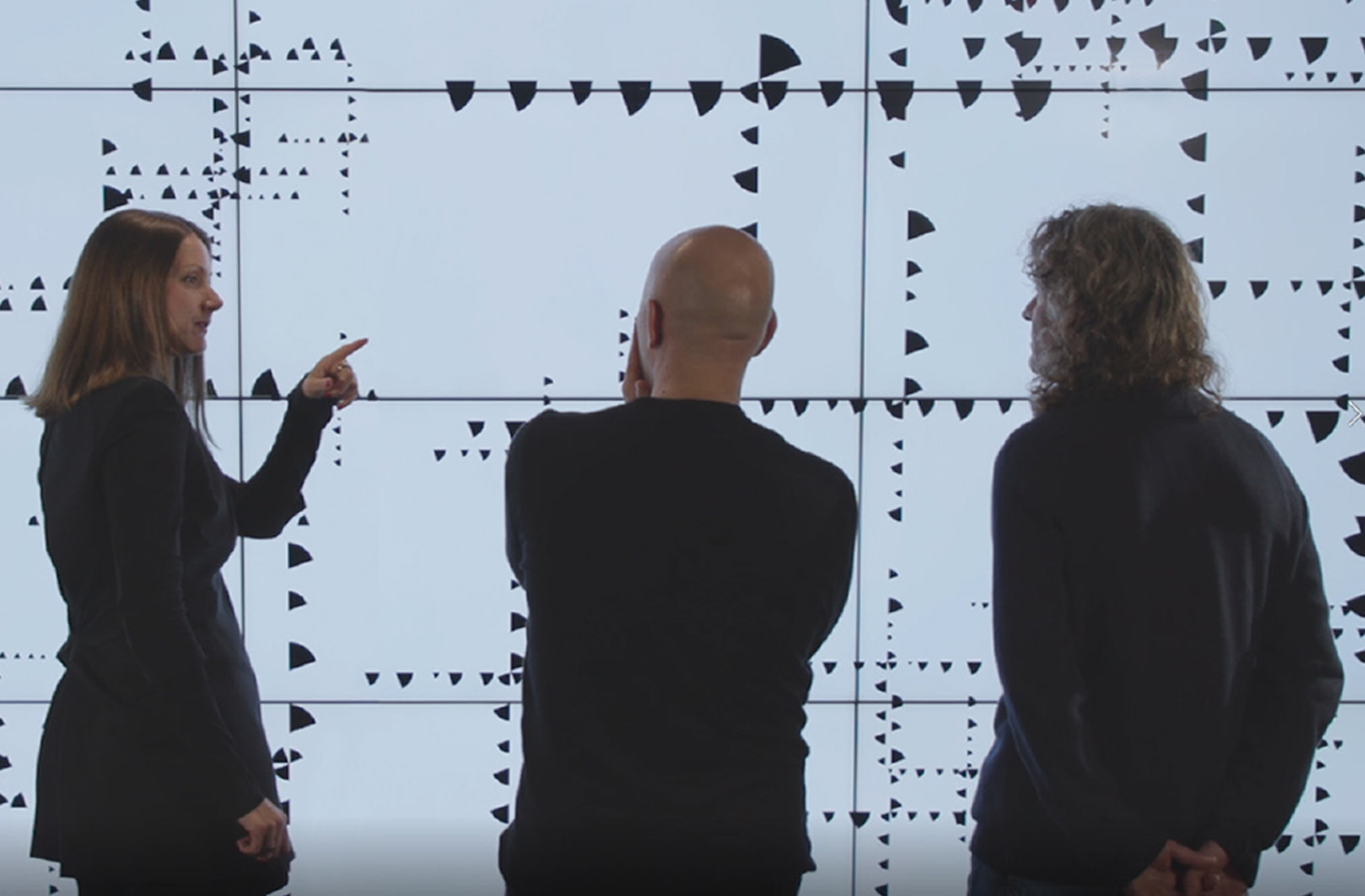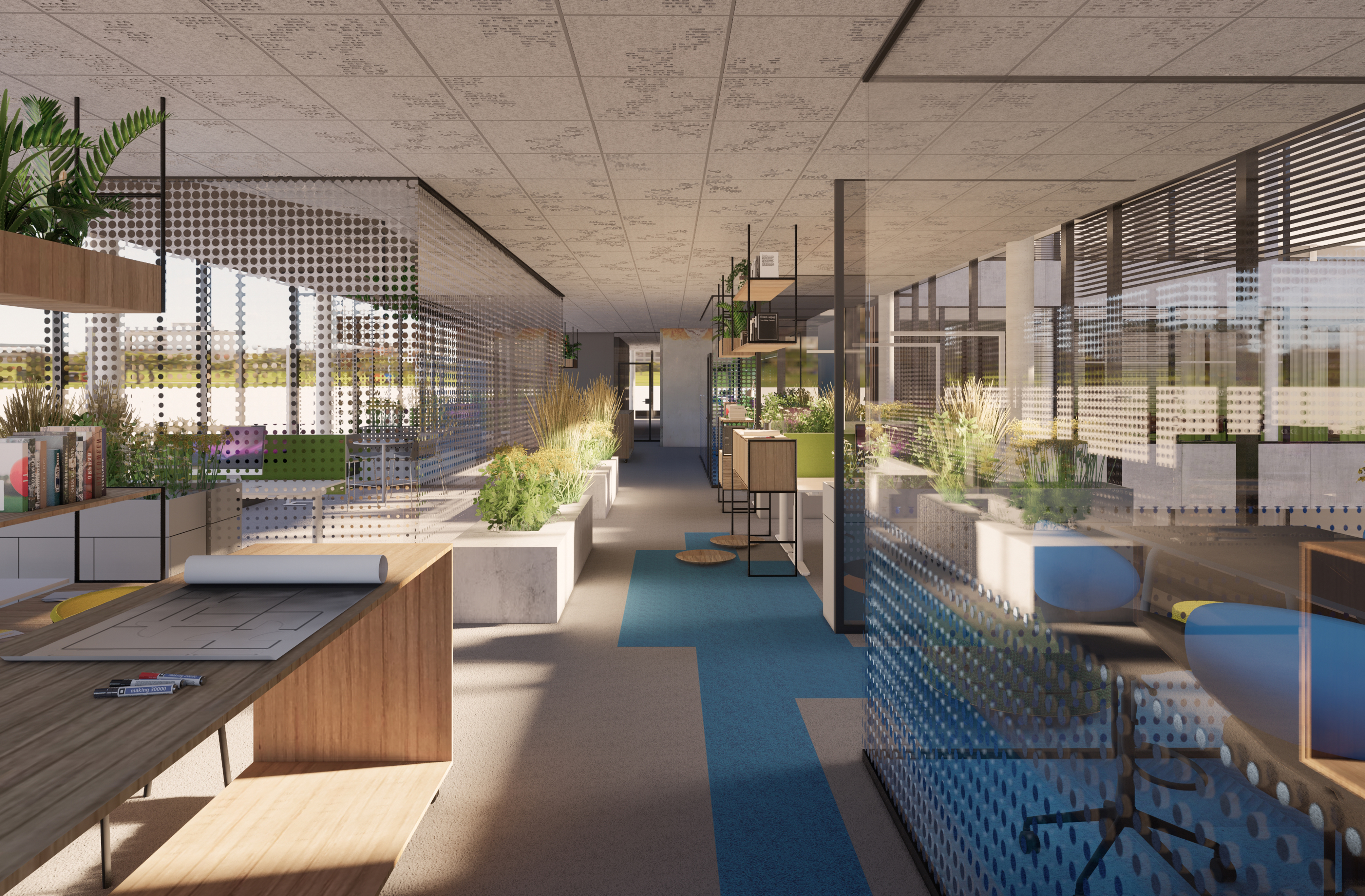
13&9 FORMS Science Design Lab TOGETHER WITH FRACTALS RESEARCH
As head of concepts and product development at 13&9, Dr. med. Anastasija Lesjak and architect Martin Lesjak work with their team to pursue design strategies that are based on the scientifically well-founded analysis of stress-reducing concepts in a space. One of their main areas of focus concerns research into perception and the effects of specific patterns that occur in nature. These patterns have the greatest significance in the built environment, where people have little to no access to nature. From this scientific interest, came the collaboration with one of the leading scientists and physicists in this field, Professor Richard Taylor from the University of Oregon and Fractals Research Laboratory (USA).

FACT Design´s acoustic ceiling tiles with implemented fractal pattern ©INNOCAD
Three years ago, a unique art-design-science collaboration was formed to address the environmental, social and individual challenges we collectively face by using a holistic approach to architecture and design. The central goal of this partnership is to develop design strategies based on scientific studies of stress-reduction in the built environment – especially in the workplace. Projects focus on the impact of specific patterns occurring in nature which people have little or no access to in the built environment.
The first designs are being applied to floor coverings as part of an exclusive partnership with Mohawk Group, because floors are one of the largest surfaces in a room. The debut collection, RELAXING FLOORS, are modular floor tiles for commercial spaces that have swiftly become a signature example of human-centered product design – winning awards and featured in esteemed publications. Further architectural applications will combine acoustics with fractal patterns for FACT Design, a company that designs and manufactures folding acoustic ceiling tiles. These applications will be launched prior to NeoCon, where the team of ScienceDesignLab will also be a part of the CEU presentation on Fractal Vision – a stress-reductive approach to the built environment.
“The aim is to generate further patterns in the form of the Fractal Library that will find applications with architects, interior designers and product manufacturers in diverse environments such as workplace, public, educational and healthcare facilities. We hope that through this commitment to fractal design, we will encourage well-being and improve diverse task performances through concentration restoration.” ScienceDesignLab